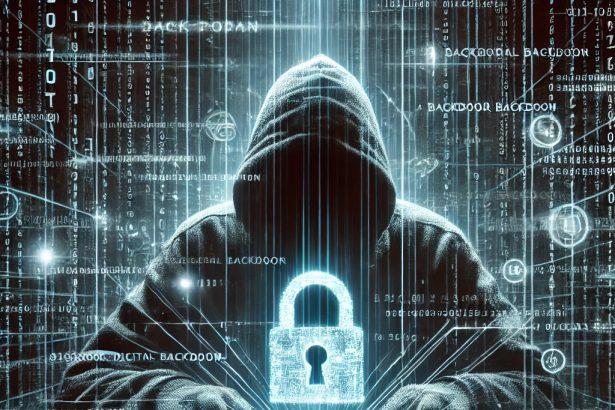A recent incident saw financial credentials disappear within minutes of system compromise, leaving victims with drained accounts and shattered trust. KimJongRAT Stealer has emerged as a potent information stealer, lurking in the shadows to harvest browser data, cryptocurrency wallet details, and login credentials. Its dual variants—one a Portable Executable, the other a PowerShell script—ensure both flexibility for attackers and deep stealth on infected machines.
Threat Overview
KimJongRAT belongs to the family of Remote Access Trojans (RATs) and keyloggers, specifically crafted for information theft. It targets browsers and wallet extensions, siphoning sensitive data without triggering obvious signs. By leveraging built-in Windows tools and trusted public CDNs, it evades standard defenses and maintains persistence.
In-Depth Analysis
Infection Vector
Attackers commonly distribute KimJongRAT via deceptive email campaigns containing malicious attachments or links. Fake Windows shortcut files (.LNK) masquerade as innocuous documents, downloading loaders and decoys (e.g., PDF fakes). Malvertising and social-engineering-lured downloads—often bundled with pirated software or keygens—provide additional infection avenues.
Behavioral Profile
- Initial Deployment: The PE variant unpacks from the loader, while the PowerShell variant executes an encoded script in memory.
- Persistence Mechanism: Both versions register startup tasks or auto-run entries, ensuring execution on reboot.
- Data Harvesting: The PE variant scrapes browser-stored credentials and cookies; the PowerShell variant targets Chromium-based wallet extensions (Binance Chain Wallet, CoinBase Wallet, MetaMask, Phantom, TronLink, Trust Wallet).
- Keylogging & Clipboard Capture: The PowerShell variant logs keystrokes and copies clipboard contents, capturing one-time passwords and private keys.
- Command & Control: Finished data packages are uploaded to remote servers hosted on public CDNs, blending in with legitimate traffic.
Risk Assessment
What happens if sensitive wallet data is stolen? Victims face immediate fund theft and long-term identity fraud. During the 2024 cryptocurrency crash, a surge in stealer variants cost users over $20 million in siphoned assets. Given its silent operation and dual-delivery methods, KimJongRAT rates as a High threat—capable of crippling both personal finances and enterprise security.
Manual Removal of Info-Stealers (For experienced users)
Step 1: Boot into Safe Mode with Networking
Info-stealers often run in the background, making removal difficult. Restarting in Safe Mode with Networking ensures they don’t load at startup.
For Windows 10/11
- Press Win + R, type msconfig, and hit Enter.
- In the System Configuration window, go to the Boot tab.
- Check Safe boot → Network.
- Click Apply > OK > Restart.
For Windows 7/8
- Restart your PC and press F8 before Windows loads.
- Select Safe Mode with Networking and press Enter.
Step 2: Stop Malicious Processes in Task Manager
- Press Ctrl + Shift + Esc to open Task Manager.
- Look for unusual processes (high CPU usage, unknown names).
- Right-click on them and select End Task.
Common Info-Stealer Process Names:
StealC.exeRedLine.exeVidar.exeClipBanker.exeRandomized system-like names
Step 3: Uninstall Suspicious Applications
- Press Win + R, type appwiz.cpl, and press Enter.
- Locate any suspicious or unknown programs.
- Right-click and select Uninstall.
Step 4: Delete Malicious Files and Registry Entries
Info-stealers often store files in hidden locations.
Delete Suspicious Files
- Open File Explorer and navigate to:
C:\Users\YourUser\AppData\LocalC:\Users\YourUser\AppData\RoamingC:\ProgramDataC:\Windows\Temp
- Delete any suspicious folders with randomized names.
Remove Malicious Registry Entries
- Press Win + R, type regedit, and hit Enter.
- Navigate to:
HKEY_LOCAL_MACHINE\Software\Microsoft\Windows\CurrentVersion\RunHKEY_CURRENT_USER\Software\Microsoft\Windows\CurrentVersion\Run
- Delete suspicious registry keys (e.g.,
StealerLoader,TrojanRun).
Step 5: Reset Browsers and Flush DNS
Since info-stealers target browsers, clearing stored credentials is essential.
Reset Browser Data
- Open Chrome, Edge, or Firefox.
- Go to Settings → Privacy & Security → Clear Browsing Data.
- Select Passwords, Cookies, and Cached files → Click Clear Data.
Flush DNS Cache
- Open Command Prompt as Administrator.
- Type the following commands and press Enter:bashCopyEdit
ipconfig /flushdns ipconfig /release ipconfig /renew - Restart your computer.
Step 6: Scan for Rootkits
Some info-stealers use rootkit techniques to stay hidden.
- Download Microsoft Safety Scanner or Malwarebytes Anti-Rootkit.
- Perform a deep system scan.
- Remove any detected threats.
Step 7: Change All Passwords & Enable 2FA
Since credentials may have been stolen, update passwords immediately for:
- Email accounts
- Banking/finance sites
- Social media accounts
- Cryptocurrency wallets
- Work and business logins
Enable two-factor authentication (2FA) for extra security.
Automatic Removal with SpyHunter (Recommended)
(For users who want a fast, reliable removal solution)
SpyHunter is an advanced malware removal tool designed to detect and eliminate info-stealers, trojans, and spyware.
Step 1: Download SpyHunter
Click Here to Download SpyHunter
Step 2: Install and Launch SpyHunter
- Open the SpyHunter-Installer.exe file from your Downloads folder.
- Follow the on-screen instructions.
- Launch SpyHunter after installation.
Step 3: Scan Your System for Info-Stealers
- Click “Start Scan” to perform a deep scan.
- SpyHunter will identify all malware-related files.
- Click “Remove” to eliminate detected threats.
Step 4: Enable SpyHunter’s Real-Time Protection
- Go to Settings → Enable Real-Time Protection.
- This prevents future infections.
How to Prevent Info-Stealer Infections
- Avoid Cracked Software & Torrents – These often contain malware.
- Use Strong, Unique Passwords – Consider a password manager.
- Enable Two-Factor Authentication (2FA) – Protects against account theft.
- Keep Windows & Software Updated – Security updates fix vulnerabilities.
- Beware of Phishing Emails – Do not click unknown links or attachments.
- Use a Reliable Anti-Malware Solution – SpyHunter detects and removes threats in real time.
Conclusion
KimJongRAT Stealer exemplifies modern malware’s sophistication: dual variants, stealthy exfiltration, and leveraging of trusted services. Early detection through behavioral monitoring and removal with reputable security tools like Combo Cleaner is paramount. Ignoring this threat can lead to irreversible financial and reputational damage.



